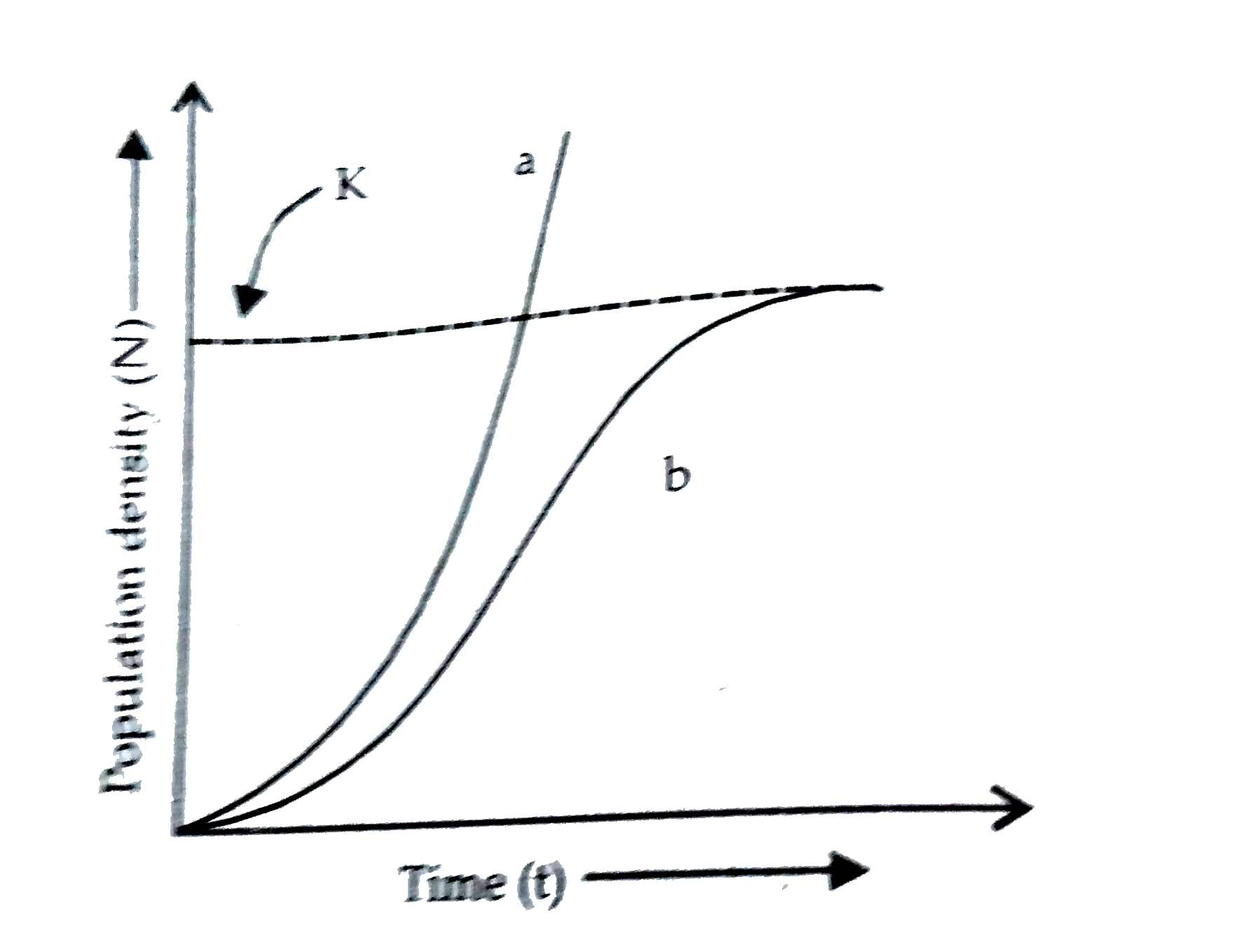When does the growth rate of a population following the logistic model equal zero ? The logistic model is given as dN/dt = rN(1-N/K):
when N nears the carrying capacity of the habitat
when N/K equals zero
when death rate is greater than birth rate
when N/K is exactly one
The correct Answer is:D
In logistic growth model population growth equation is described as
dNdt=rN(K−NK)
Where, N = Population density at time t
r = Intrinsic rate of natural increase
K = Carrying capacity
when, NK=1 then K−NK=0
Therefore, dNdt=0
Topper's Solved these Questions
- BOOK - ARIHANT NEETCHAPTER - ORGANISMS AND POPULATIONS EXERCISE - Chapter exercises ( Medical entrances special format questions Assertion and reason)12videos
ORGANISMS AND POPULATIONS
- BOOK - ARIHANT NEETCHAPTER - NEURAL CONTROL AND COORDINATION EXERCISE - CHAPTER EXERCISES MEDICAL ENTRANCES GALLERY111videos
NEURAL CONTROL AND COORDINATION
- BOOK - ARIHANT NEETCHAPTER - ORIGIN OF LIFEEXERCISE - Chapter Exercises Medical entrance Gallery (C) (Collection of questions Asked in NEET & Various Medical Entrance Exams)24videos
ORIGIN OF LIFE
Similar Questions
What is 'r' in the population equation given : dN/dt = rN
View SolutionStudy the population growth curves in the graph given below and answer the questions which follow :
(i) Identify the growth curves ‘a’ and ‘b’.

(ii) Which one. of them is considered a more realistic one and why ?
If dN9dt)=rN(K−NK) is the equation of the logistic growth curve, what does K stand for ?
(iv) What is symbolised by N ?View Solution
Knowledge Check
- Question 1 - Select One
When does the growth rate of a population following the logistic model equal zero ? The logistic model is given as dN/dt = rN(1-N/K):
Awhen N/K is exactly one.Bwhen N nears the carrying capacity of the habitat.Cwhen N/K equals zero.Dwhen death rate is greater than birth rate. - Question 2 - Select One
Which of the following is not an assumption of the logistic model for population growth?
AMembers of the population complete for resources at high densityBAll individuals have the same effect on population growthCPopulation growth rate increases as the size of the population approaches the carrying capacityDThere is no time lag between birth and the time an organism begins to affect population growth - Question 3 - Select One
Read the following text and answer the following question on the basis of the same :
Growth of population with time shows specific and predictable patters. Two types of growth patter of populaiton are exponetial and logistic growth . When resource in the habitat are unlimited each species has the ability to relize fully its innate potential to grow in number . Then the population gorws in exponential fashion . When the resource are limited growth curve shows an inital slow rate and then it accelerates and finally slows giving the gorwth curve which is sigmoid .
The population growth is generally descibed by the following equations :
dN/dt=rN(K−N)/K
What does 'r' represent in the given equation ?APopulation density at time Y.BIntrinsic rate of natural increaseCCarrying capacityDThe base of natural logarithum
According to the logistic population growth model, the growth rate is independent of
View SolutionPopulation Growth|Growth Models|Exponential Growth|Logistic Growth|NCERT
View Solutionwhich of the following option is true for verhulst Pearl logistic growth?
(A)population growth is decreased by the equation dNdt=rN[KK−N].
(B) r' represents biotic potential.
(C) applicable to a population growing in habitat with limited resources.
(D)K represents carrying capacityView SolutionRead the following text and answer the following question on the basis of the same :
Growth of population with time shows specific and predictable patters. Two types of growth patter of populaiton are exponetial and logistic growth . When resource in the habitat are unlimited each species has the ability to relize fully its innate potential to grow in number . Then the population gorws in exponential fashion . When the resource are limited growth curve shows an inital slow rate and then it accelerates and finally slows giving the gorwth curve which is sigmoid .
The equations correctly represents Verhulst-Pearl logistic growth is:View SolutionRead the following text and answer the following question on the basis of the same :
Growth of population with time shows specific and predictable patters. Two types of growth patter of populaiton are exponetial and logistic growth . When resource in the habitat are unlimited each species has the ability to relize fully its innate potential to grow in number . Then the population gorws in exponential fashion . When the resource are limited growth curve shows an inital slow rate and then it accelerates and finally slows giving the gorwth curve which is sigmoid .
Identify the incorrect statement :View Solution

